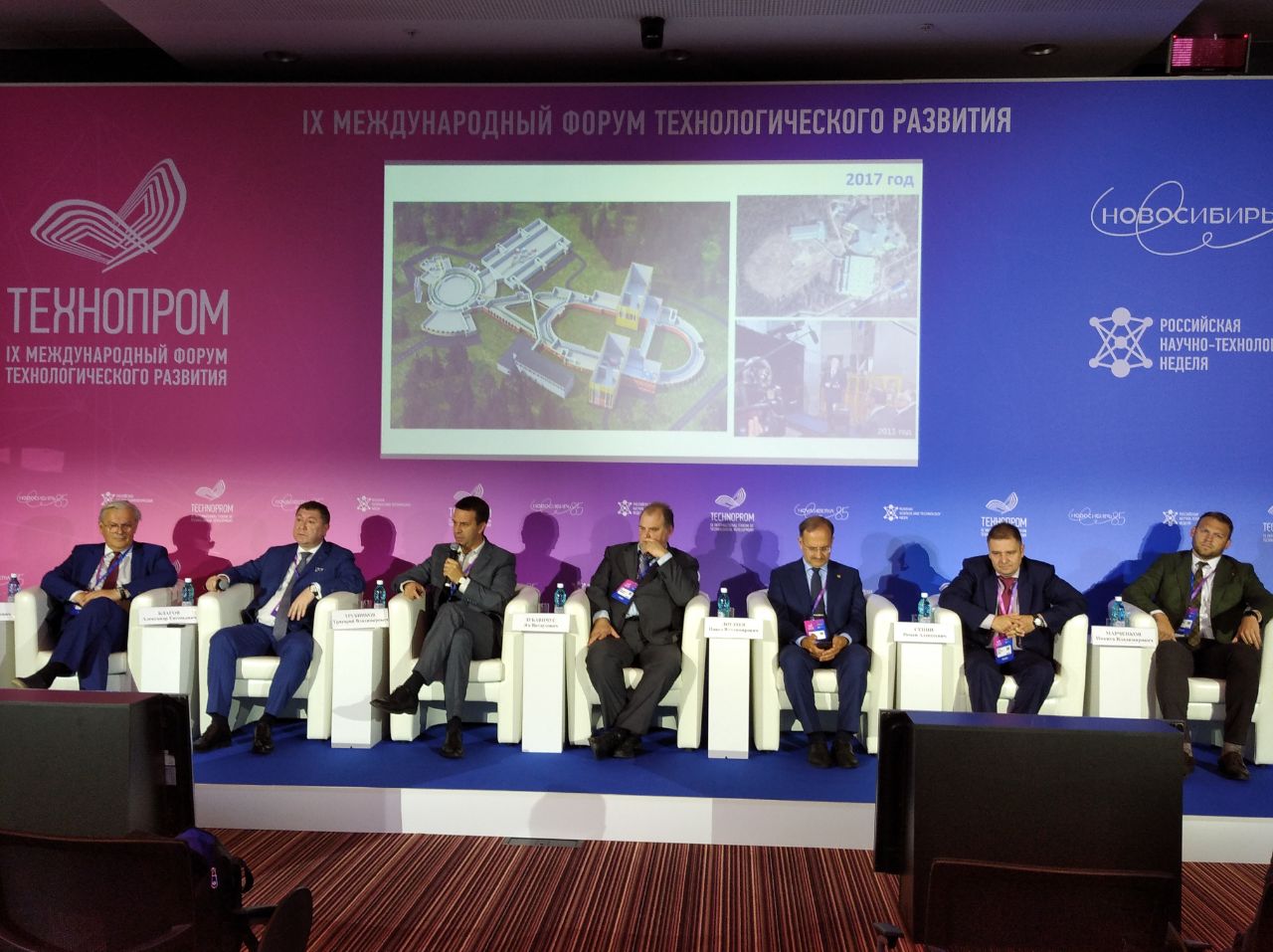About NICA megascience project at Technoprom
Media, 25 August 2022
On 24 August, JINR Director Grigory Trubnikov spoke at several sessions of the Technoprom Forum 2022 in Novosibirsk. Thus, under the Forum’s topic “Nuclear technologies and megascience projects”, a session entitled “Unique scientific facilities of the megascience class – drivers of science, human potential, and technology transfer development” was held. Academician Trubnikov spoke about the NICA accelerator complex, its goals, stages and implementation dates, detailing project management and applications.
Grigory Trubnikov informed that the NICA complex will allow parallel implementation of scientific programme both in the field of basic research and in the field of applied research – the latter is being carried out already at the extracted beams from the Nuclotron. The largest applied projects at NICA are the creation of new materials in collaboration with the Kurchatov Institute, the Budker INP SB RAS, and other scientific centres of the Russian Academy of Sciences; work on the disposal of radioactive wastes, new safe energy sources, and space medicine.
“We have already launched the first several MeV/nucleon channel for testing encapsulated microelectronics for Roscosmos, and by the end of 2022, we plan to introduce a dedicated channel with energies up to 600 MeV/nucleon in the whole range from protons to heavy ions, which will test electronics for Roscosmos and the European Space Agency,” Grigory Trubnikov said.
“By the end of 2023, we are going to obtain a circulating beam in the collider and begin testing. At the same time, the stage format of the NICA complex construction and its cascade type allow us to engage in experimental physics even before the collider is put into operation. The first experiments are already underway at the superconducting booster ring, which was launched in 2020,” commented Academician Trubnikov, presenting the project’s implementation status. He noted that two research detectors of the complex are also planned for operation: MPD in 2024 and SPD in 2027.
Together with Geliymash, Gazprom, and other organizations, JINR is building a helium plant, one of the most cutting edge. The plant will be designed to produce, store, and transport pure gases – helium, hydrogen, oxygen, neon, xenon and nitrogen – in a liquefied state.
JINR is also working with NIIEFA on a medical proton cyclotron, which will use technology developed for NICA: a unique superconducting cable operating at liquid helium temperature and giving currents up to 15 kA.
Grigory Trubnikov emphasised that such a large-scale project as the NICA accelerator complex requires international expertise and a project management system. “Each experiment, i.e. MPD, SPD, BM@N, the collider itself, have 2-3 international expert committees: Machine Advisory Committee, Detector Advisory Committee, Scientific Committee. There are representatives from all the world’s leading centres in them: from the USA, CERN, China, Latin America, European centres,” he explained. Each committee meets at least once a year during the NICA construction process, and conducts a thorough and independent expertise. Academician Trubnikov noted that great attention is being paid to training personnel for NICA. The project is now actively involving countries located in Latin America, Africa, South Asia, and the Mediterranean region. Over the past five years, around 400 new participants have joined the project.
